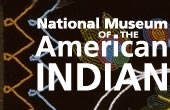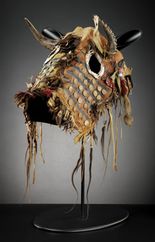SPALDING - The Nez Perce Tribe's tradition as
horsemen harkens back centuries.
But it was the relatively
new program to breed horses and encourage youth to learn the
responsibilities of tending to the animals that drew the eye of a
documentary crew from the Smithsonian Institution.
Filmmakers
have been conducting interviews in the Lapwai Valley this week as
part of an exhibit scheduled to open this fall through the
Smithsonian's National Museum of the American Indian.
The
exhibit is set to feature artifacts and information relating to the
effects the horse had on American Indian tribes, said Emil Her Many
Horses, a curator of the project.
"It impacted hunting,
travel, warfare, it had an impact on art," Her Many Horses said. "It
even had an impact on the size of the tepee."
The film and
accompanying exhibit is designed as a companion piece to the 2006
book "A song for the horse nation, horses in Native American
culture."
Her Many Horses said the Nez Perce Tribe's work on
a horse breeding program, and a program to encourage youth to learn
the responsibilities of horses, is one aspect that drew the
attention of exhibitors.
The Nez Perce Tribe has bred
Appaloosas with Akhal-tekes in an attempt to create a horse similar
to one Nez Perce rode two centuries ago. The program has not only
taught youth about horses, Nez Perce Tribal Executive Committee
Chairman Samuel N. Penney said, but about the work ethic they
require.
"I think there's a lot of fun for the kids that
participate, but there's a lot of work involved," he said.
Penney was surrounded by cameras and documentary-style lighting
Wednesday in an interview for the film at the Nez Perce National
Historical Park. The film crew spent the last several days speaking
to tribal horsemen on the history of the tribe's traditional horse
culture, and its contemporary horse programs.
A crew of four
filmmakers and sound editors negotiated sprinklers and noise from
tractor-trailer mufflers in an attempt to get Penney's words on
tape.
A horse culture within the tribe and the use of horses
in cultural traditions are practices that continue, Penney said. The
5- to 7-minute film, featuring the past and present of the Nez Perce
Tribe's horses, will be one portion of the exhibit.
As a
whole, the Smithsonian exhibit explores the effect of horses on
American Indian tribes beginning with their reintroduction by the
Spanish circa the 1700s.
"We're trying to get some of the
historical context," Her Many Horses said. "We're very interested in
any of the historical aspects."
Her Many Horses said how
American Indian warriors used horses, and the decline of horses
after reservations, will be explored in the exhibit. It will include
clothing, tools, weapons and other items connected to the horse from
tribes throughout the United States.
The exhibit opens
November at the George Gustav Heye Center in New York, part of the
Smithsonian's National Museum of the American Indian. The display
moves to Washington, D.C., in 2011, where it will stay until a
traveling exhibition begins in 2013.
Penney said the
credibility of the Smithsonian and its projects helped lend to the
tribe's support of the film.
"I think it's just a great
opportunity for the Nez Perce Tribe to take part in the production,"
he said.
National Museum of the American Indian

A
Song for the Horse Nation Exhibition
November 14,
2009–July 7, 2011
George Gustav Heye Center, New York
A Song for the Horse Nation presents the epic story of the horse's
influence on American Indian tribes from the 1600s to the
present.
A